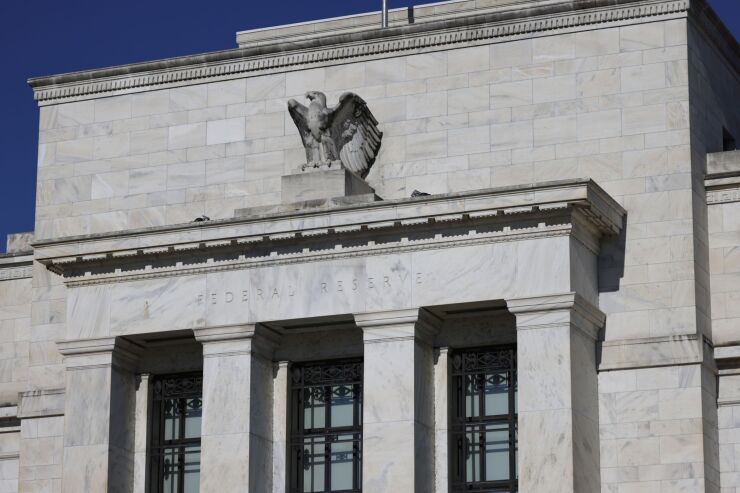Want unlimited access to top ideas and insights?
During testimony to the House Financial Services Committee, Federal Reserve Board Chairman Jerome Powell repeatedly evaded questions from members of both parties about the impact of
Rep. Rashida Tlaib D-Minn. seemed perplexed or confused by Powell's assertion that Fed policy isn't "a driver of longer-run [housing] supply." Powell said in response: "In the short run,
In fact, Chairman Powell and his predecessor, former Fed Chair and Treasury Secretary Janet Yellen, are responsible for the surge in mortgage lending activity and home prices. After nearly crashing the US Treasury bond market in December 2018, let us recall, the Powell Fed suddenly pivoted policy from tightening to ease, and began to aggressively force mortgage rates down – a year before COVID.
Between January of 2019 and March of 2020, the Fed cut the duration of $10 trillion in mortgage-backed securities (MBS) in half, something that this author and many market participants thought impossible. Through open-market purchases of MBS and sales of to-be-announced (TBA) contracts in the secondary market for home mortgages, the Fed forced interest rates down and home prices surged higher.
"It is useful to recall that the Fed used to depend upon a chief transmission mechanism — housing — to control economic activity and deflation," this writer notes in my new book,
In response to a question from Rep. Nikema Williams D-Ga., Powell said: "Over the long run, [interest rates] don't really affect housing supply. You know, assuming that rates will go up and down… interest rates really affect housing demand. So, if you, with lower rates, you see more demand, and higher rates, maybe less demand."
Powell neglects to mention that the primary reason for the Fed's dramatic shift in policy after December 2018 was to bail out the US Treasury, not to help the economy or housing. Ironically,
Even after March of 2020, when the Treasury market essentially collapsed, the political narrative from the Fed was focused on helping the economy navigate through COVID. The dysfunction in the Treasury market is never mentioned. The fact that the Fed's zero rate policy helped to finance mortgage forbearance for millions of Americans during COVID was a serendipity.
The unspoken issue for the Fed under Powell, however, was whether elevating the cost of buying a home by raising interest rates after 2021 was having any impact on reducing home prices. The need to ride to the rescue of the Treasury in 2020 had a cost, boosting home prices dramatically. The fact of higher funding costs was inflationary and also hurt banks due to trillions in unrealized losses on loans written during COVID.
Because of the Fed's primary concern, namely preserving the Treasury's access to the debt markets, the fact of rising home prices during and after COVID was entirely a secondary concern. Just as in 2000, when Fed Chairman Alan Greenspan kept interest rates too low for too long, the Fed's decision to continue purchases of Treasury debt and MBS drove up housing prices, but the motivation was not full employment or price stability.
Had Chairman Greenspan and the Fed raised interest rates in the 2000s, the bubble in the housing market might not have been nearly as large, but the U.S. economy might have weakened. In 2019, after a near miss in the Treasury market, how would the U.S. economy have looked without being able to finance a $2 trillion federal deficit?
The fact of the Treasury's need to finance growing debt is the unspoken truth in the discussion of monetary policy and housing costs. By early 2023, when the Fed was raising interest rates, the damage was done. The value of mortgage securities plummeted, causing Silicon Valley Bank to fail and imposing trillions of dollars in unrealized losses on the rest of the banking industry.
By lowering interest rates in 2019 onward, millions of tomorrow's home sales were pulled into the present. A vast wave of home sales and mortgage refinance transactions caused more than half of all residential mortgages to turn over.
After 2022, mortgage rates more than doubled and lending volumes fell dramatically, causing a severe recession in the housing sector. The industry continues to consolidate today as new loan origination volumes have fallen to 1/10th of levels seen during COVID.
The huge decline in interest rates engineered by Jerome Powell and the FOMC from 2019 to 2022 drove up prices for single-family homes by double digits annually, destroying a key component of the American dream of home ownership.
Yet the fact of the massive federal debt prevented the Fed from tightening enough to force home prices down, as Fed Chairman Paul Volcker did in the 1980s. In June of 2022, Chairman Powell described the mounting carnage in the house industry with considerable detachment:
"Recent indicators suggest that real GDP growth has picked up this quarter, with consumption spending remaining strong. In contrast, growth in business fixed investment appears to be slowing, and activity in the housing sector looks to be softening, in part reflecting higher mortgage rates. The tightening in financial conditions that we have seen in recent months should continue to temper growth and help bring demand into better balance with supply."
Sadly, none of Chairman Powell's statements regarding supply and demand turned out to be true for housing. Concerns about the Treasury market and the government's weakening ability to finance trillions in short-term debt prevent the Fed from maintaining a policy that meets the legal mandate for price stability.
Not only does maintaining liquidity in the Treasury market lead to higher inflation, but the surge in home prices over the past five years may be lasting. With President Donald Trump calling almost daily for Chairman Powell to cut interest rates or resign, the next leg in the false Washington narrative about inflation may be another upward surge in home prices care of Donald Trump, followed by a significant home price correction just prior to the 2028 election.






